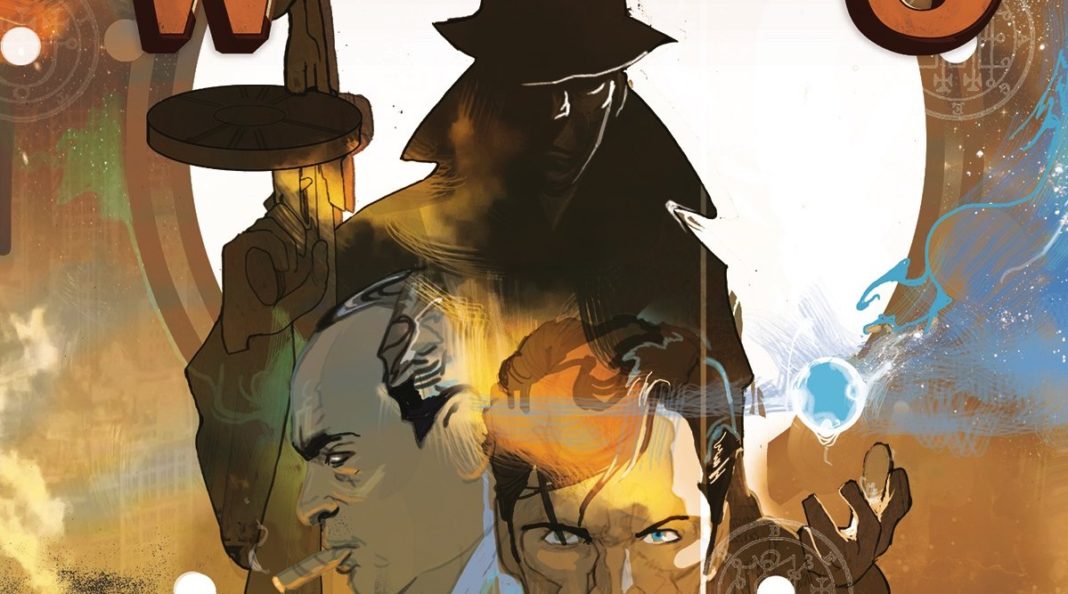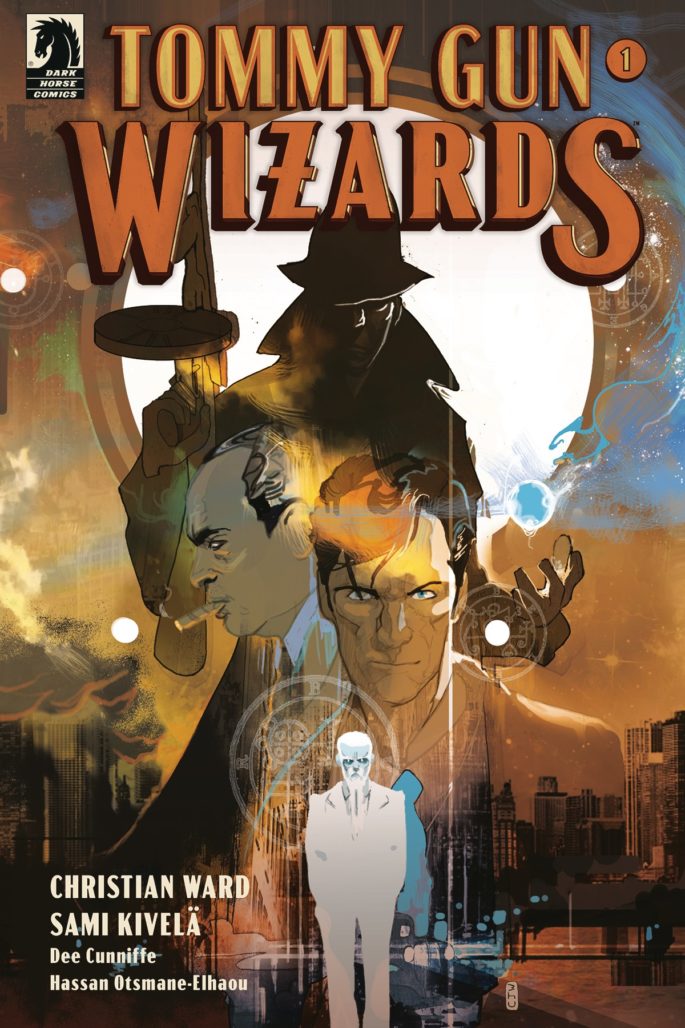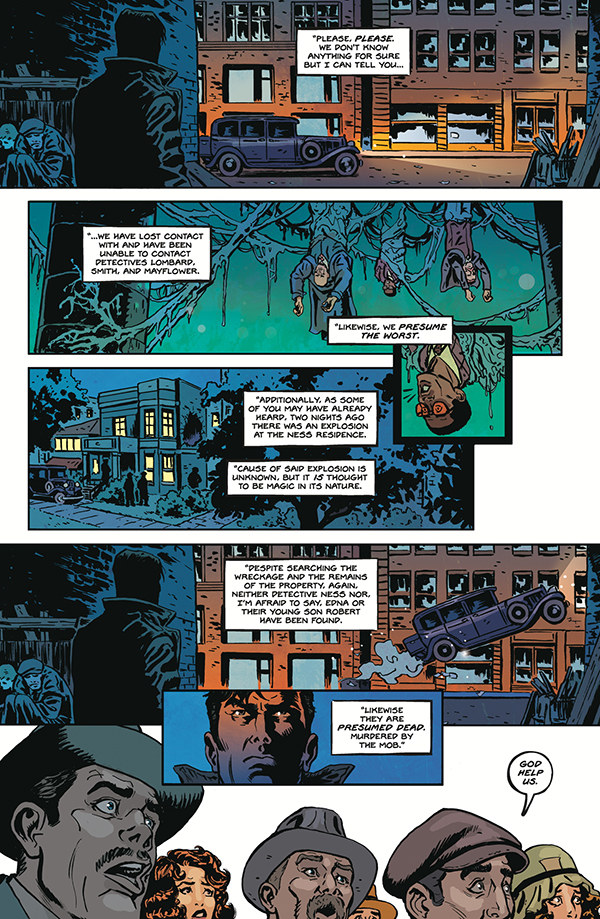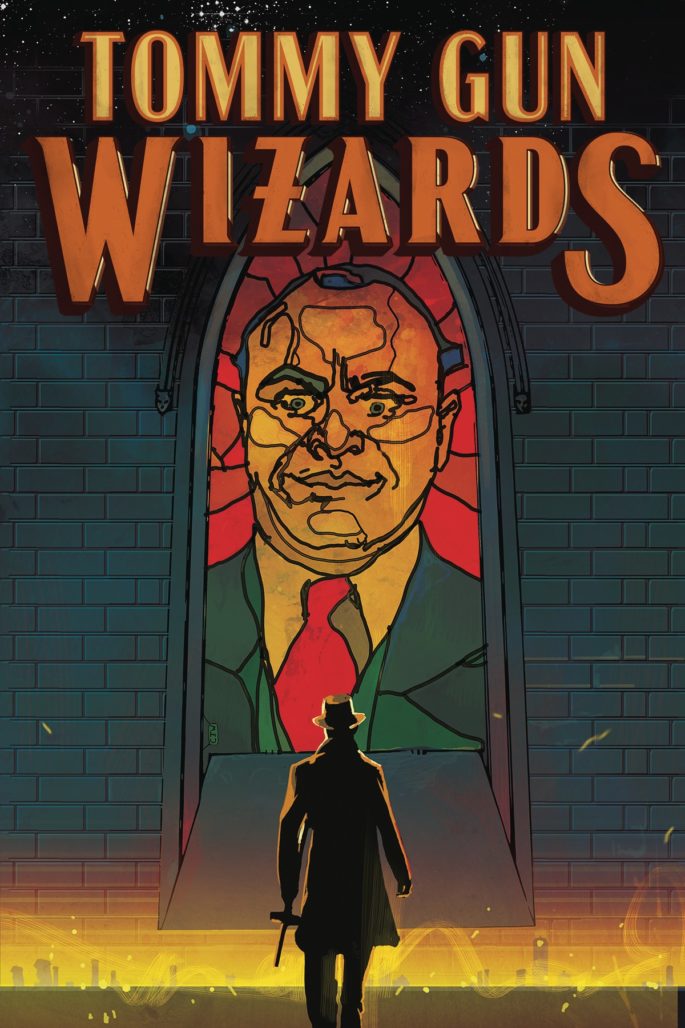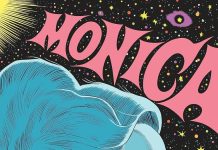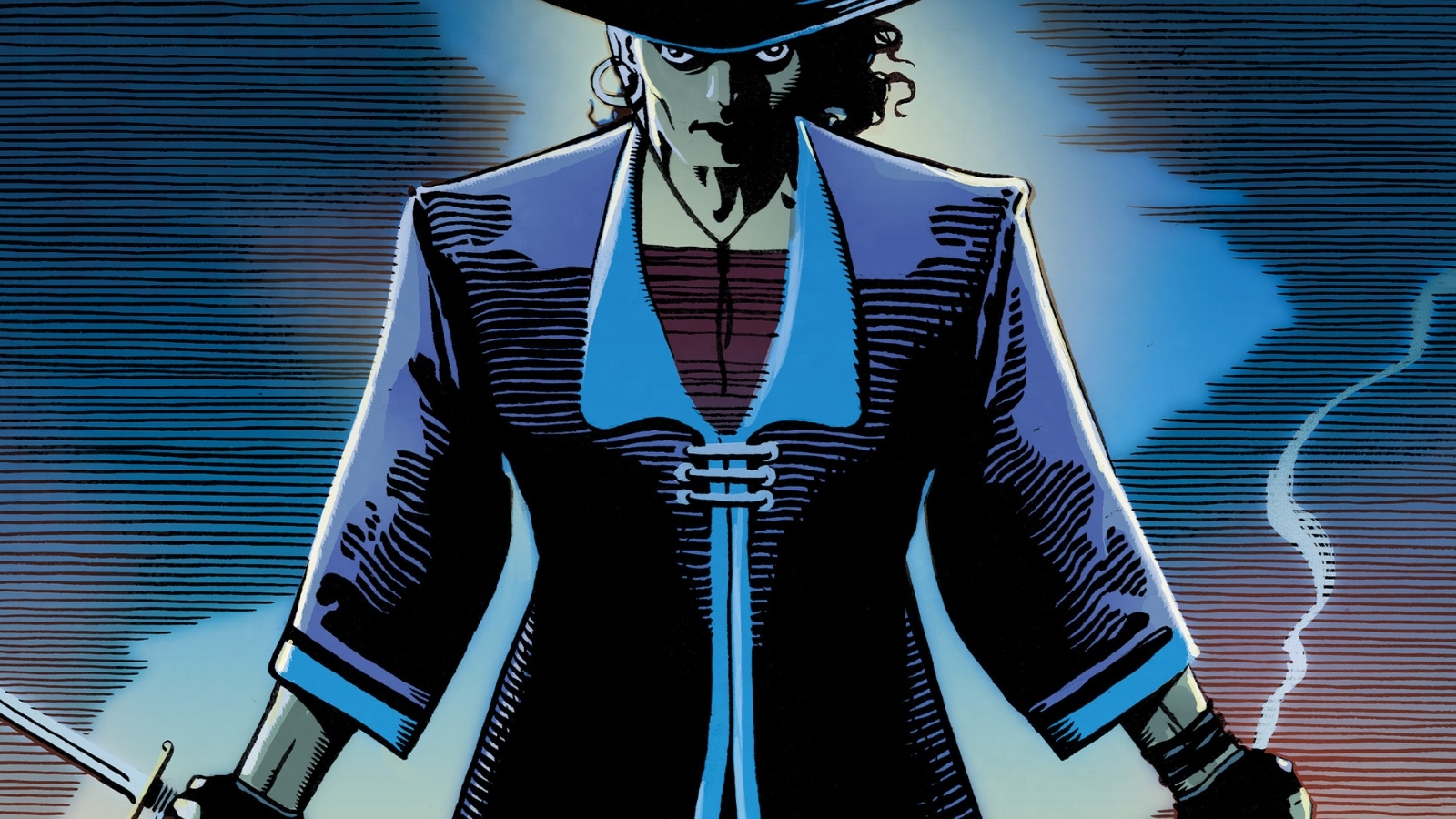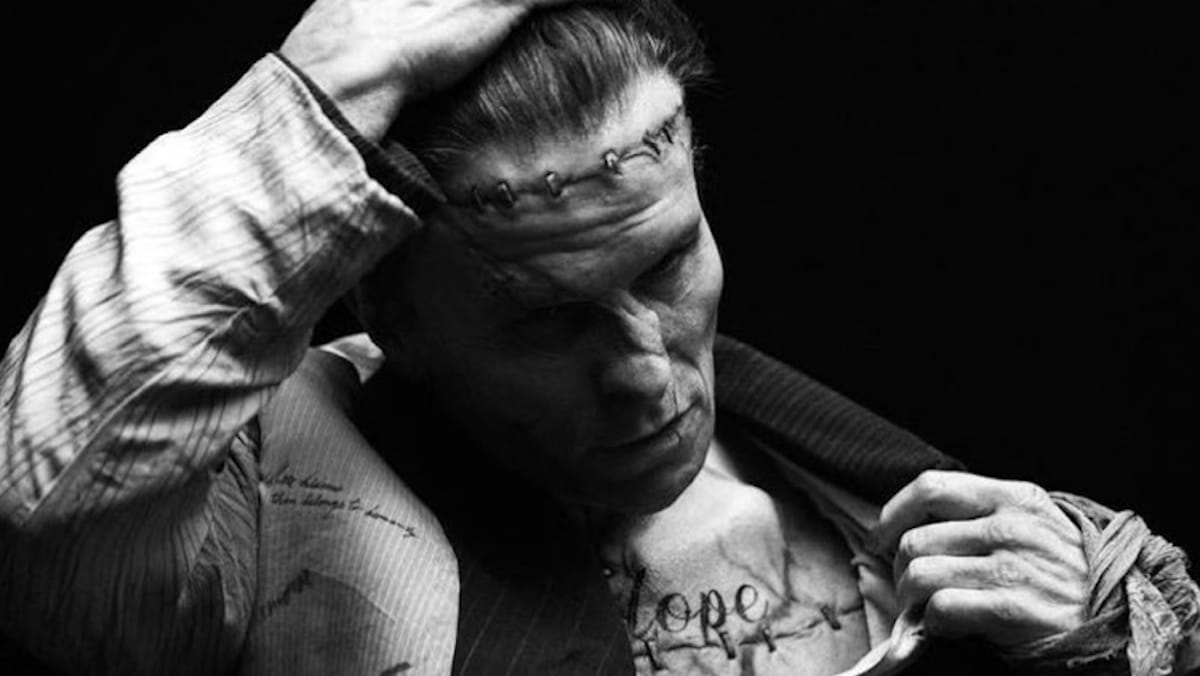Christian Ward has one of the most inventive color palettes in all of comics. For his first writing project, Ward decided to bring it with him. He wrote and co-colored Machine Gun Wizards, a Dark Horse miniseries illustrated by Sam Kivelä, co-colored by Dee Cunniffe, and lettered by Hassan Otsmane-Elhaou. I really enjoyed my interview with Christian about his experience making the comic and how Ward’s colors blend with Kivelä’s line art.
Since you didn’t have an opportunity to write professionally before Machine Gun Wizards, did you start to feel pigeonholed as just an artist?
The funny thing is I never actually planned to make comics with anyone other than myself. When I imagined making comics I’d always be the writer and artist but a big part of the fun making comics is the collaboration. There’s a magic that happens when an artist and writer create something together and being a fan of comics I just couldn’t turn down working with writers I’d always admired. My original plan got sidetracked by fantastic collaborators like Matt [Fraction], Saladin [Ahmed] and [G.] Willow [Wilson].
Do you think a lot of other artists find themselves in the same plight, eager to write but lacking any opportunities to do so?
I know a lot of artists who want to write alongside drawing but it can be tough. That said, the best thing as an artist wanting to write is you can just draw your own book, even if that means you are only drawing a page a week alongside paying gigs.
In many ways, that’s what I did here. It’s no secret that money is tight in creator-owned comics, but I was fortunate because I was able to use the money I was earning on Invisible Kingdom to essentially ‘work for free’ on Machine Gun Wizards. We could use the advance we received to give Sami Kivelä (the artist), Dee Cunniffe (co-colourist) and Hassan Otsmane-Elhaou (the letterer) a good page rate. So while my team got paid, I used my free time to write, co-colour and draw the back up strips.
That meant lots of late nights and working on weekends which wasn’t the healthiest schedule and certainly shouldn’t be celebrated or endured for any length of time, but I felt like it was worth the sacrifice to finally get one of my stories in print.
How did you show off your skill as a writer to Dark Horse?
I became friendly with editor Daniel Chabon after he commissioned me to do a cover for Jeff Lemire’s Black Hammer. I actually pitched a miniseries for one of Dark Horse’s licensed properties which both he and Dark Horse loved. Unfortunately, it got nixed by the property owner and never happened, but it opened the door for me as a writer. Half a year or so later I pitched what became Machine Gun Wizards.
Was there a learning curve to writing a comic for another artist to draw?
Not so much a learning curve as much as going into it with respect and treating an artist how you want to be treated. Writing and drawing a comic isn’t totally different, it’s all just storytelling. I love when my collaborators have given me the freedom to make my own storytelling choices as an artist so it was important to me that I gave Sami the same freedom.
You have to accept that when another artist draws your story it’s going to look different to what you have in your head, but that takes us back to magic I talked about earlier. Comics live in that magical space between the imagination of all the collaborators. That isn’t just limited to the artist and writer but also the colourist and letterer. The comics that really work are the ones when everyone on the team is bringing their own vision to the project.
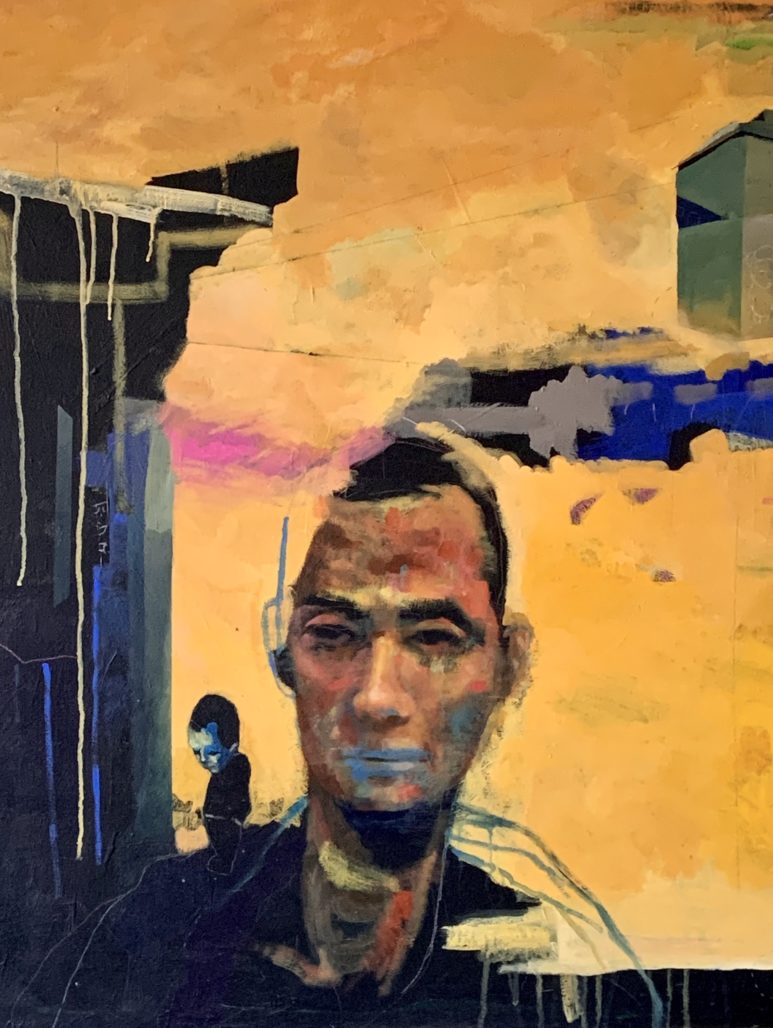
You referenced the magical elements to your coloring in a previous interview with The Beat. Can you identify what you do differently that makes your colors so unique?
Before I was a comic artist I was a painter. My work was very expressionistic rather than realistic and I would layer line, form, and colour together to build tension between the different elements. I think I’ve carried over that approach to my colouring, less so when colouring Sami’s work than in my own work.
I build the line, form, colour and texture all at the same time rather than draw the line and then colour it. I also like to mix traditional media into my palette. So I’ll layer scans of watercolour paint onto each page. I really like the tension it creates on a page.
Any time a scene involves magic you implement a more fantastical color palette. Was it challenging to transition between those colors and the ones you used for non-magical scenes?
I’m a big fan of Richmond Lewis’ colouring on Batman: Year One and knew I wanted to ape that style a little here. Bold colour choices. Pinks and neons and then more natural muddy colours. So when there was no magic, Dee and I kept the colours natural and somewhat muted. When there was magic, we’d go wild. I’d layer on more texture and cosmic elements. The magic had to seem alien to the world ( for reasons that become clear) and had to be almost jarring against it, like fireworks going off indoors
Was there something about Sam’s lineart that made it especially conducive to that kind of variation?
Sami’s work has such a great bold confident line that it can take bold colouring and really sing. You only have to look at his work with Jason Wordie on Abbott and Undone by Blood to see that.
Do you plan to color all the comics you write?
Oh god no. Never say never as there might be another project where it’s the right choice, but it was so time-consuming. Trying to make time to color another book alongside my own work was rough. I’d rather spend that time writing more comics. And honestly, my regular partner in colour Dee brings just as much to the table as I. He’ll be colouring future volumes of MGW.
Do you have any other writing projects in the works?
Yes, though we’re expecting our second child in a few months so I’ve had to take my foot off the gas a little. It’s not greenlit yet, I’m currently plotting the second arc of Machine Gun Wizards. Alongside that, I’m talking to a few publishers about both writer and writing/drawing projects. I have a couple of horror/fantasy/crime hybrids I really want to do.
What new insights did writing a comic for another artist to draw give you into the process of making comics?
Writing comics for another artist to draw is way easier than drawing a comic yourself!
Thanks to Christian Ward for a fascinating interview. A collected edition of Machine Gun Wizards is now available in stores. Christian is on Twitter @cjwardart and Instagram @cjwardart.
Matt Chats is an interview series featuring discussions with creators or players in comics, diving deep into industry, process, and creative topics. Find its author, Matt O’Keefe, on Twitter and Tumblr. Email him with questions, comments, complaints, or whatever else is on your mind at [email protected].


